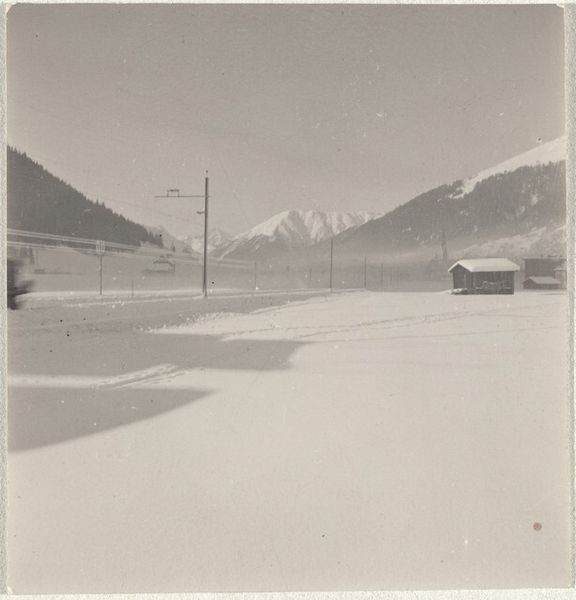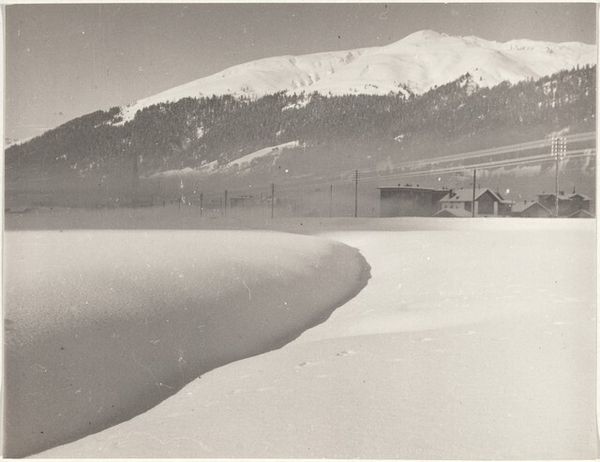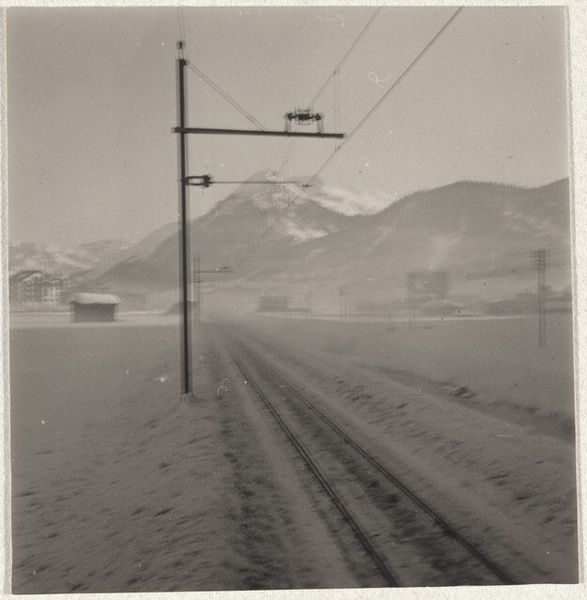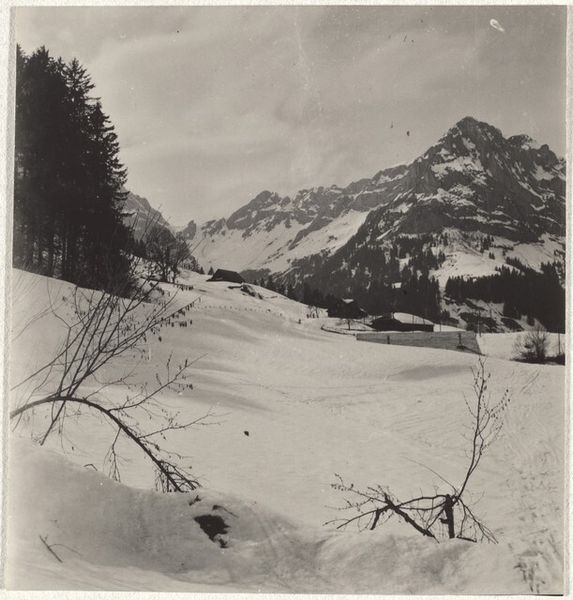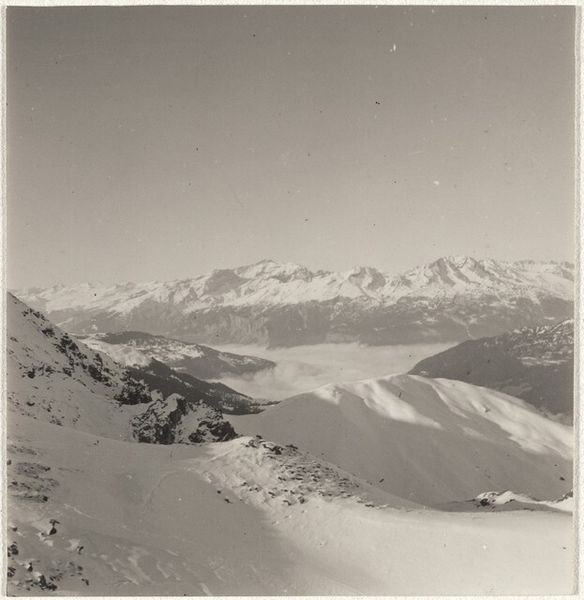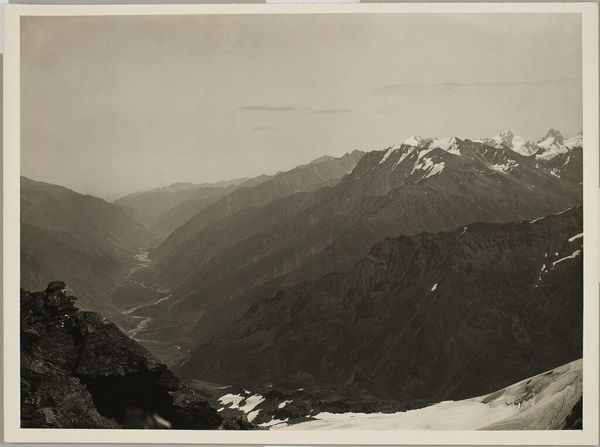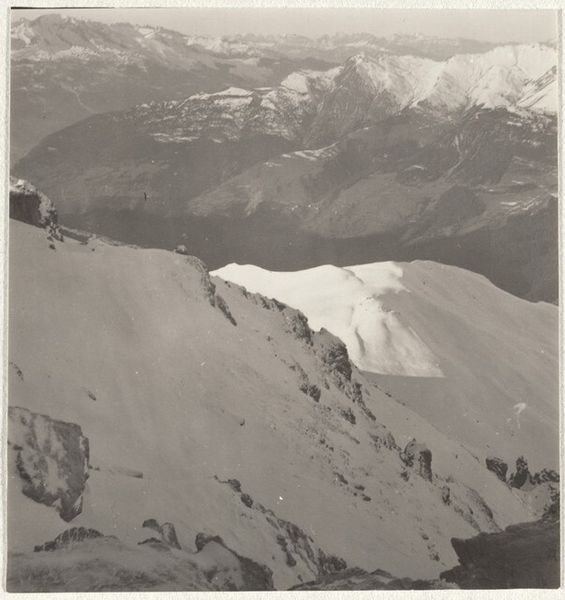
Dimensions: sheet (trimmed to image): 20.6 x 17.9 cm (8 1/8 x 7 1/16 in.)
Copyright: National Gallery of Art: CC0 1.0
Editor: Here we have Robert Frank’s “Power lines--Landscape,” a gelatin-silver print from between 1941 and 1945. The stark monochrome and the looming power lines give it a rather industrial feel, despite the otherwise natural, snowy setting. How would you interpret this work? Curator: Considering the period, this gelatin-silver print resonates with the burgeoning industrial age. Look at the emphasis Frank places on the power lines themselves; they're not merely a backdrop but a defining element, dissecting the landscape. I am drawn to considering the material process that underpinned both its artistic production, and the technological advancement that the lines denote. The social context here asks: how did electricity reshape the lived experiences and visual culture of that era? Editor: That’s an interesting perspective. I initially focused more on the composition, the contrast between the snow and the dark lines. I suppose I didn’t consider the deeper societal implications. Curator: Exactly. It is useful to consider that even a seemingly straightforward landscape becomes an active commentary. Photography during this time moved increasingly toward direct documentation, offering both artistic expression, but often, the hard reality of rapid modernization. This is about more than just surface-level aesthetics. Editor: So you see the “Landscape” element in the title as almost ironic, given the dominant industrial presence? Curator: Precisely. The landscape is no longer pristine but rather processed, mediated by technological interventions. What are your thoughts on the artist's choice to use a gelatin-silver print and, moreover, how does it highlight these ideas? Editor: The grayscale emphasizes the hard lines and textures, especially in contrast to the smooth snow. Using this particular medium, Frank underscores how industrial advancements were impacting traditional views of "landscape," turning it into a study of materiality and cultural change. Curator: Precisely. The work and the artist can be perceived as responding to this intersection, revealing something profound.
Comments
No comments
Be the first to comment and join the conversation on the ultimate creative platform.
